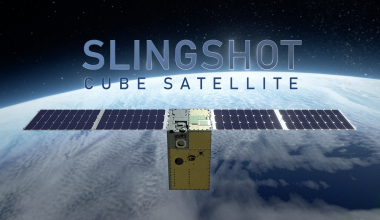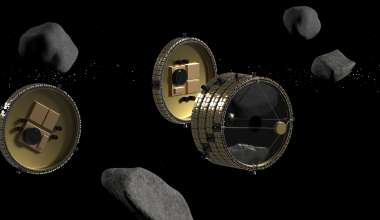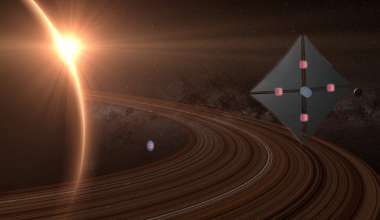This discovery, made possible by instruments Aerospace designed and which are flying on NASA’s Van Allen Probes, indicates that previous models of the belts were overestimating the amount of electron radiation that is in the inner belt. This finding will likely have an effect on how satellites are designed in the future. Because satellite builders may have overestimated the radiation environment, they may have been building heavier and more expensive spacecraft than necessary. This new discovery will help Aerospace in its work creating international standards for space launch vehicles and satellites, potentially adjusting those standards to allow lighter spacecraft.
It was previously believed that there was a dynamic outer electron belt surrounding Earth, with an inner belt dominated by protons with a lower-energy, yet stable, electron component. These belts are separated by a slot region that is normally devoid of particles. The findings now show that the inner belt is usually devoid of high-energy electrons, such that there is only an outer electron belt at high energy.

However, following strong geomagnetic storms, a new, transient population of high-energy electrons can form in the inner belt. It can take months, or even years, for this new belt to die away. Until now, these inner belt dynamics had been hidden from view due to the inner belt protons causing misleading sensor readings. These findings are meaningful because scientists can now observe and measure the inner belt with confidence, which was not possible before the Van Allen Probes launched.
“Scientists have been waiting nearly a quarter century to fly this specially designed sensor in this orbit. We are now seeing these hidden inner zone electrons, and it’s very exciting,” said Dr. Seth Claudepierre, of The Aerospace Corporation’s Space Sciences Department. He is the lead author of the journal article “The hidden dynamics of relativistic electrons (0.7–1.5 MeV) in the inner zone and slot region,” recently published in the Journal of Geophysical Research — Space Physics.
Aerospace scientists conceived, designed, and built two unique instrument packages for the Van Allen Probes mission, which launched in August 2012 — the Magnetic Electron Ion Spectrometer (MagEIS) and the Relativistic Proton Spectrometer (RPS). MagEIS addresses the electron environments responsible for the vehicle charging hazard and the total dose on surfaces and inside vehicle shielding. RPS addresses the total dose hazard behind thick shielding and the single-event effect hazard from inner belt protons and transient solar energetic particles.
About The Aerospace Corporation
The Aerospace Corporation is a leading architect for the nation’s space programs, advancing capabilities that outpace threats to the country’s national security while nurturing innovative technologies to further a new era of space commercialization and exploration. Aerospace’s national workforce of more than 4,600 employees provides objective technical expertise and thought leadership to solve the hardest problems in space and assure mission success for space systems and space vehicles. For more information, visit www.aerospace.org. Follow us on LinkedIn and on X: @AerospaceCorp.




